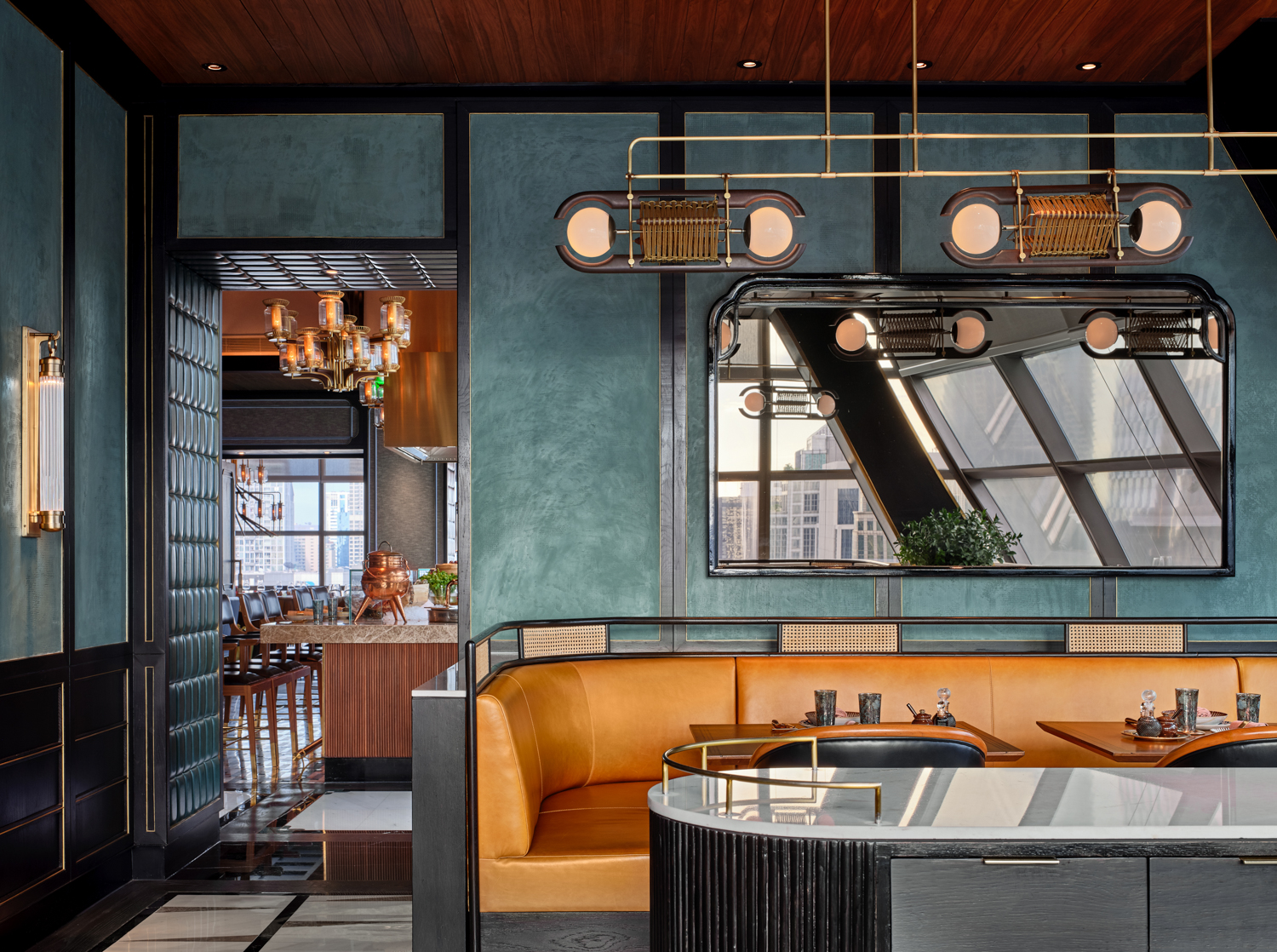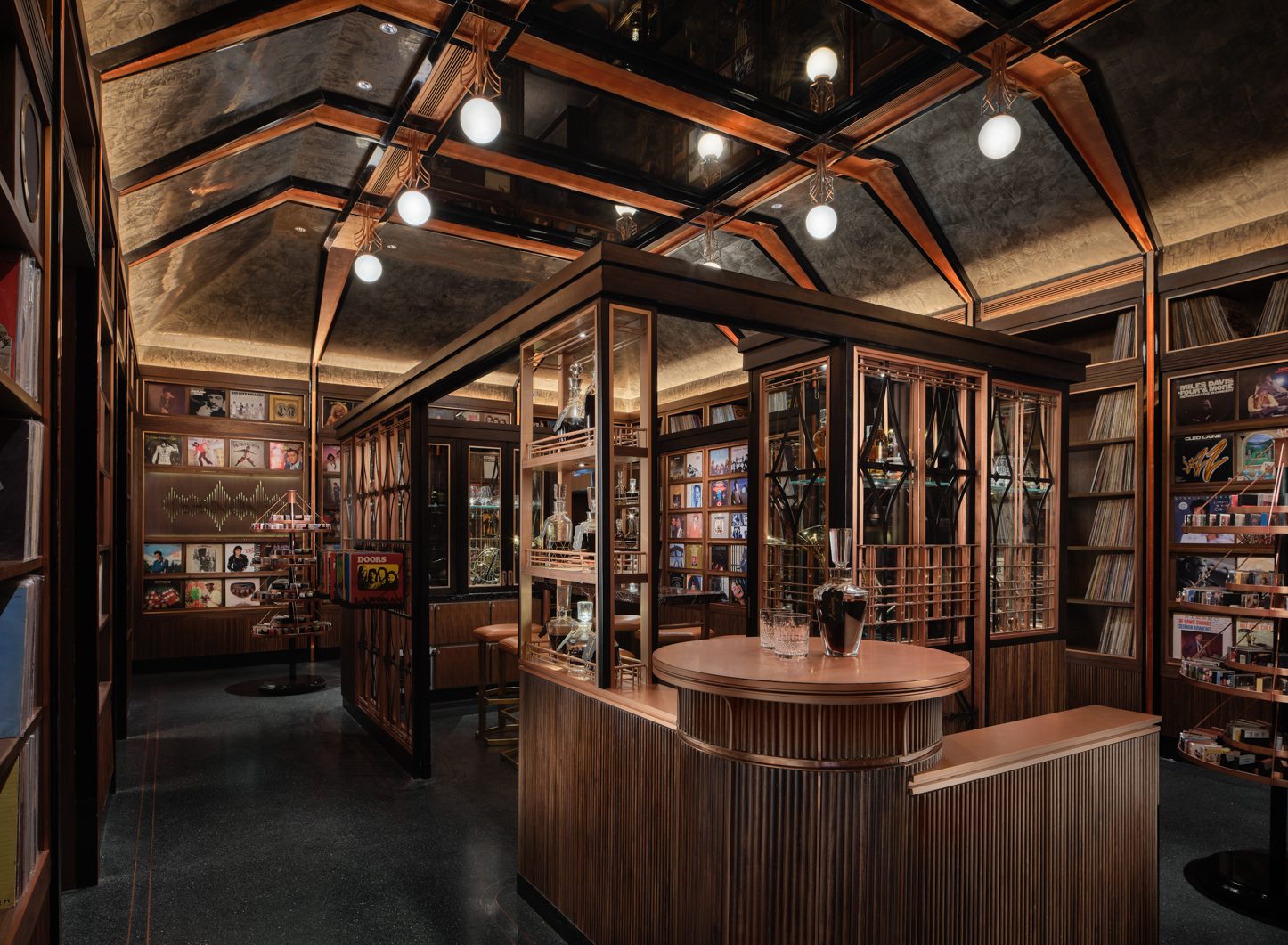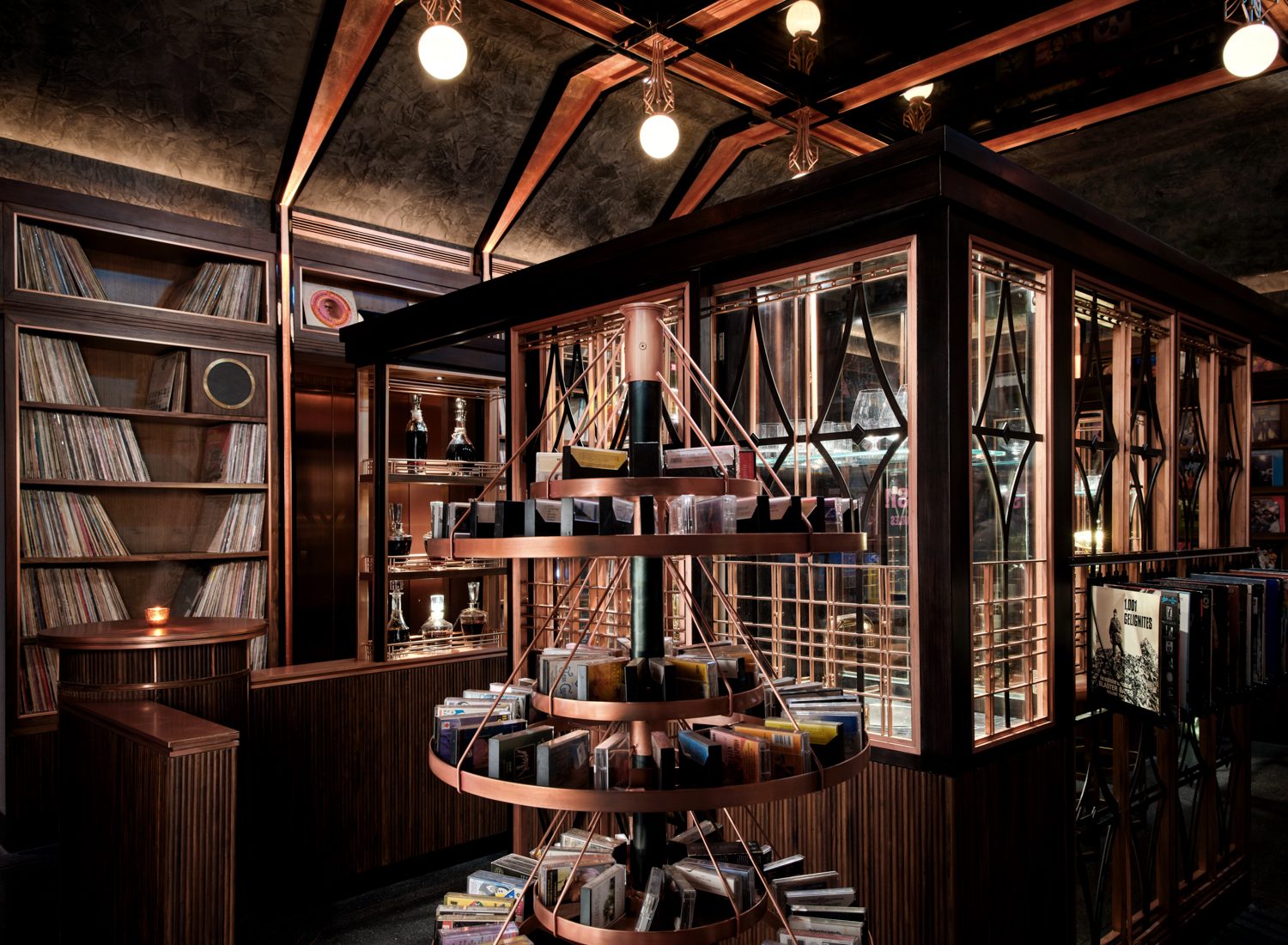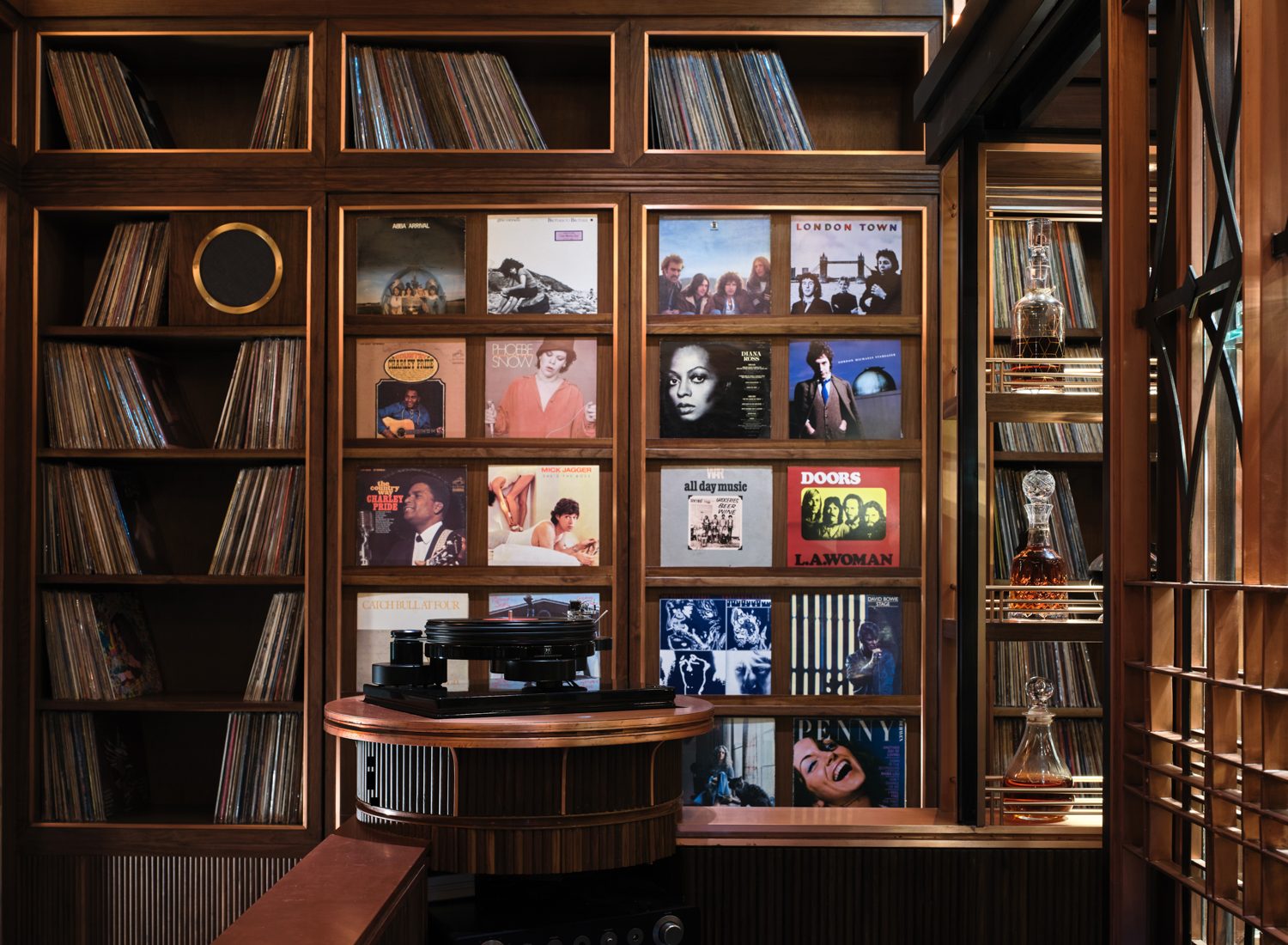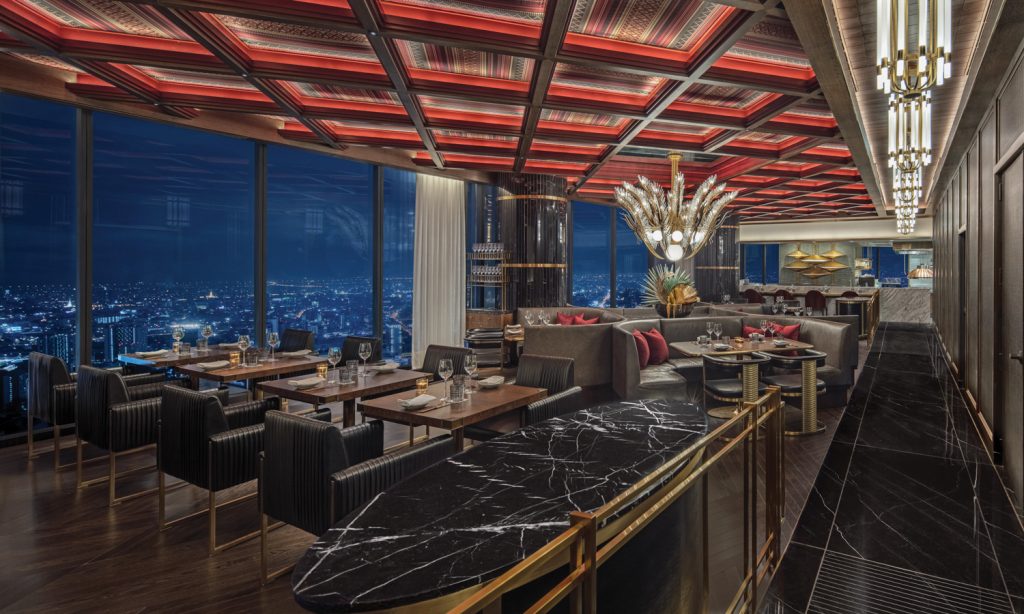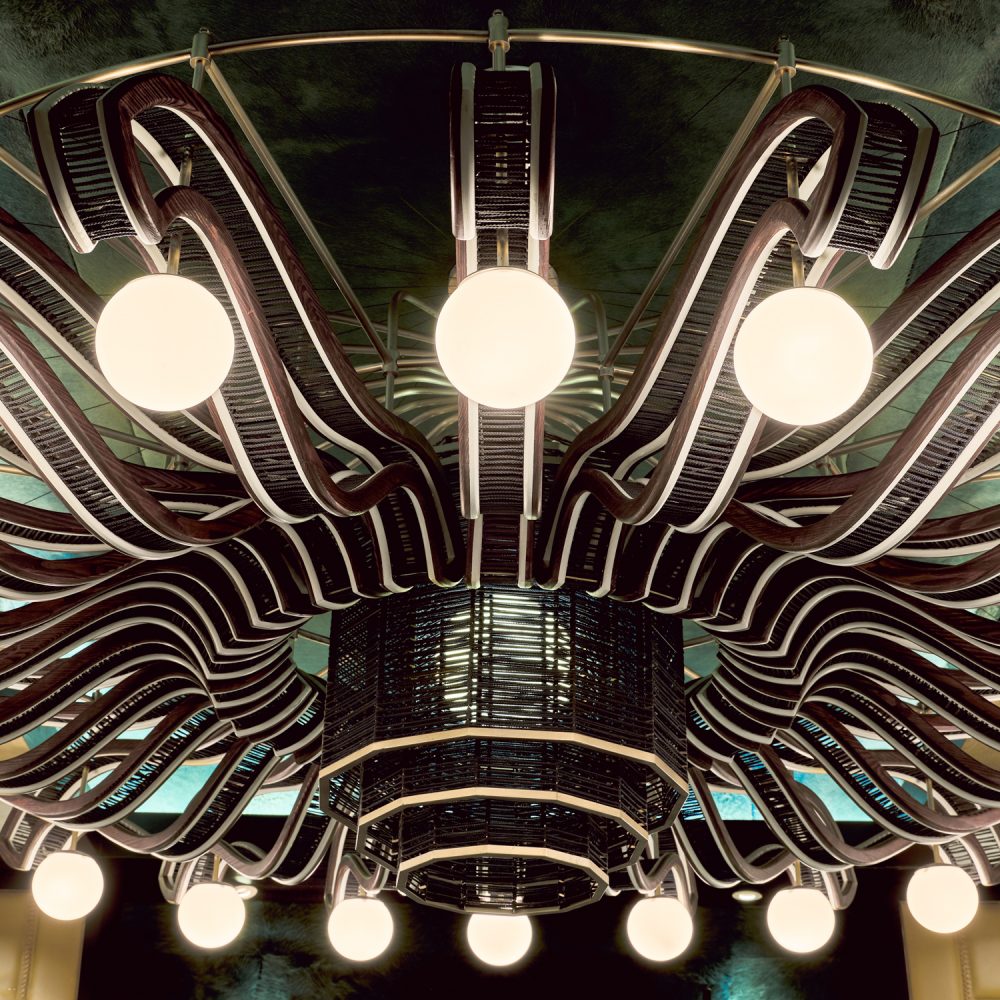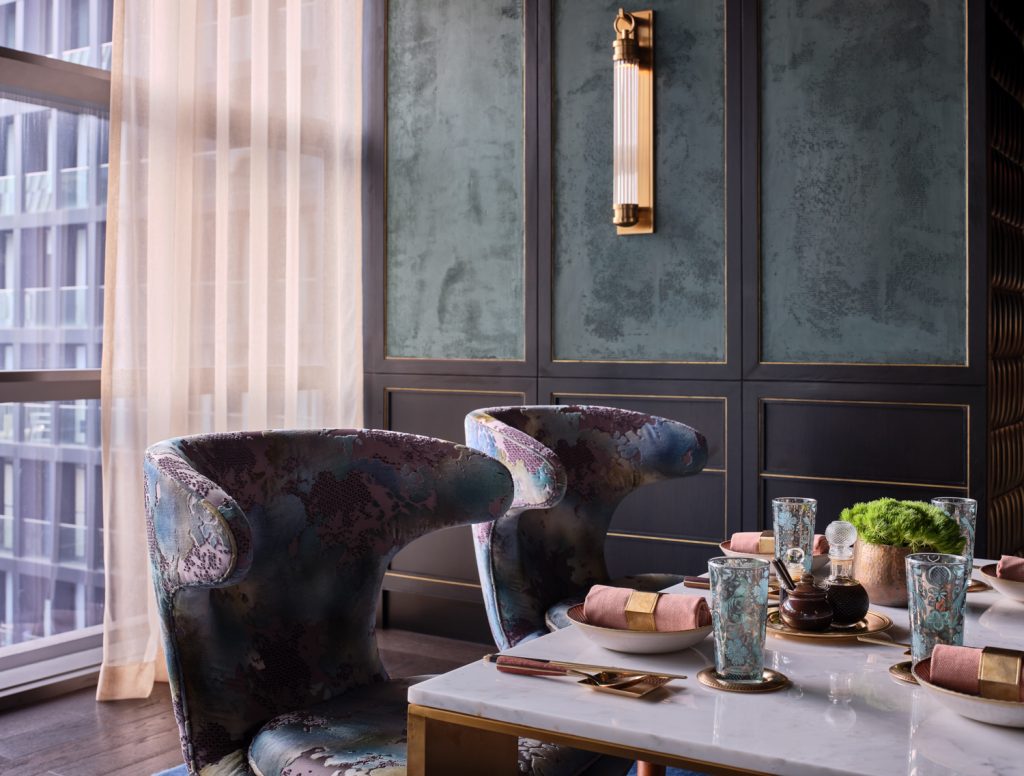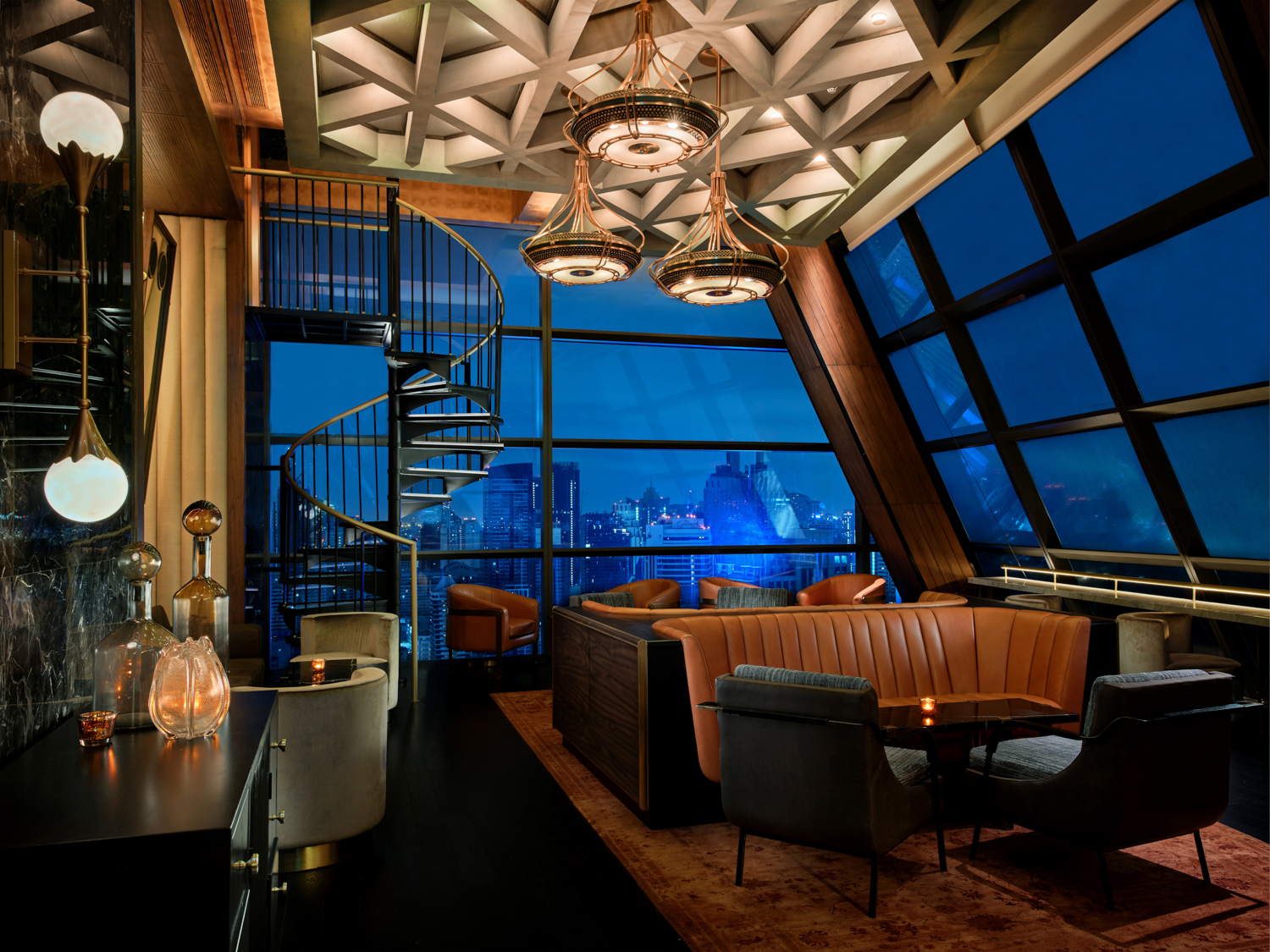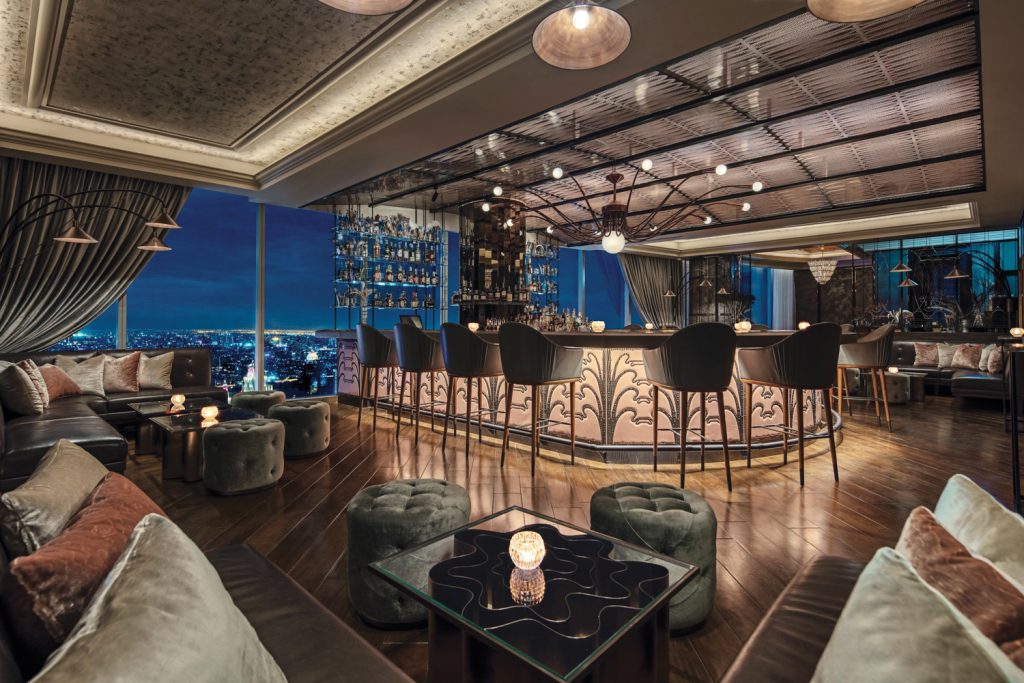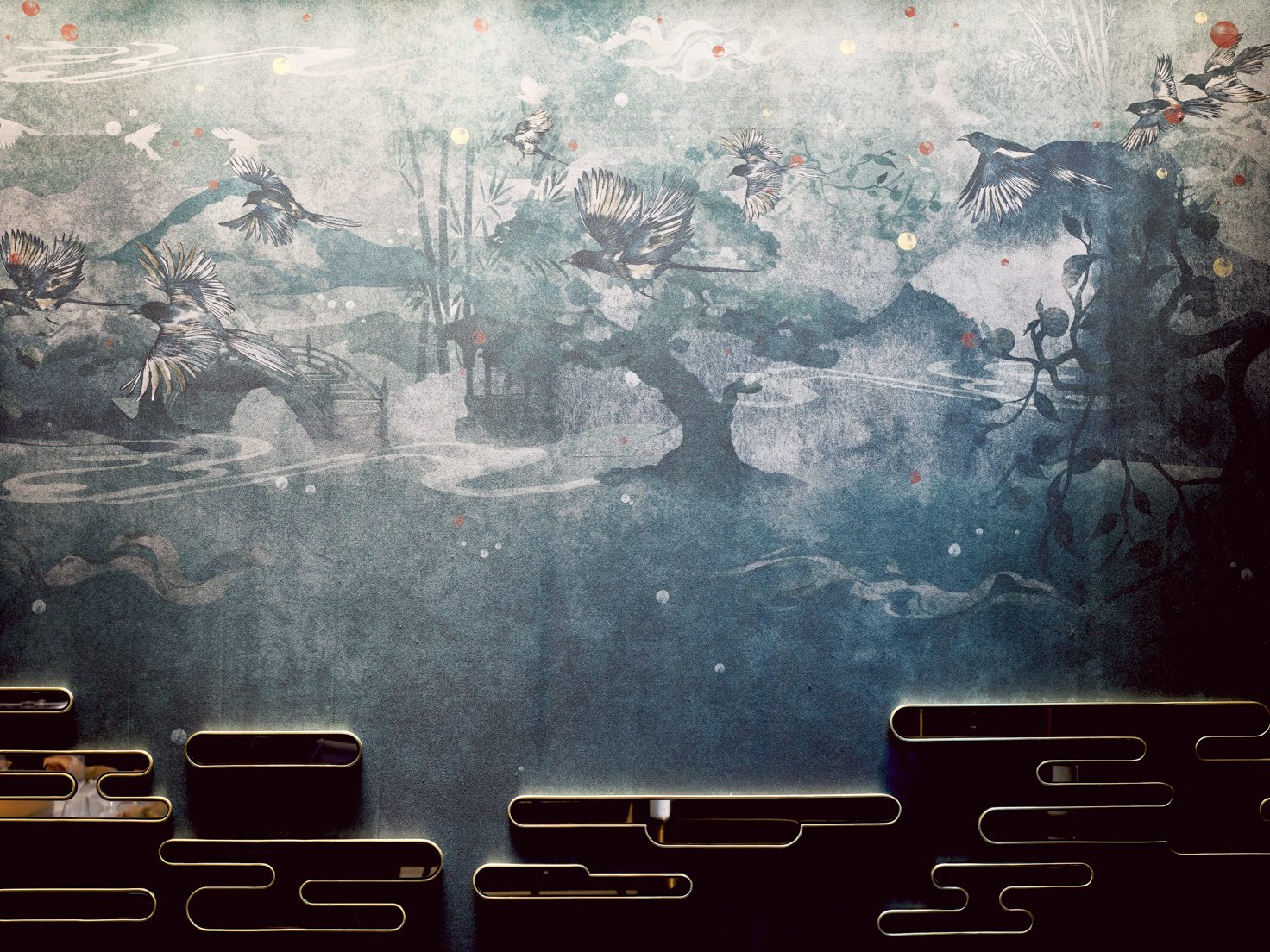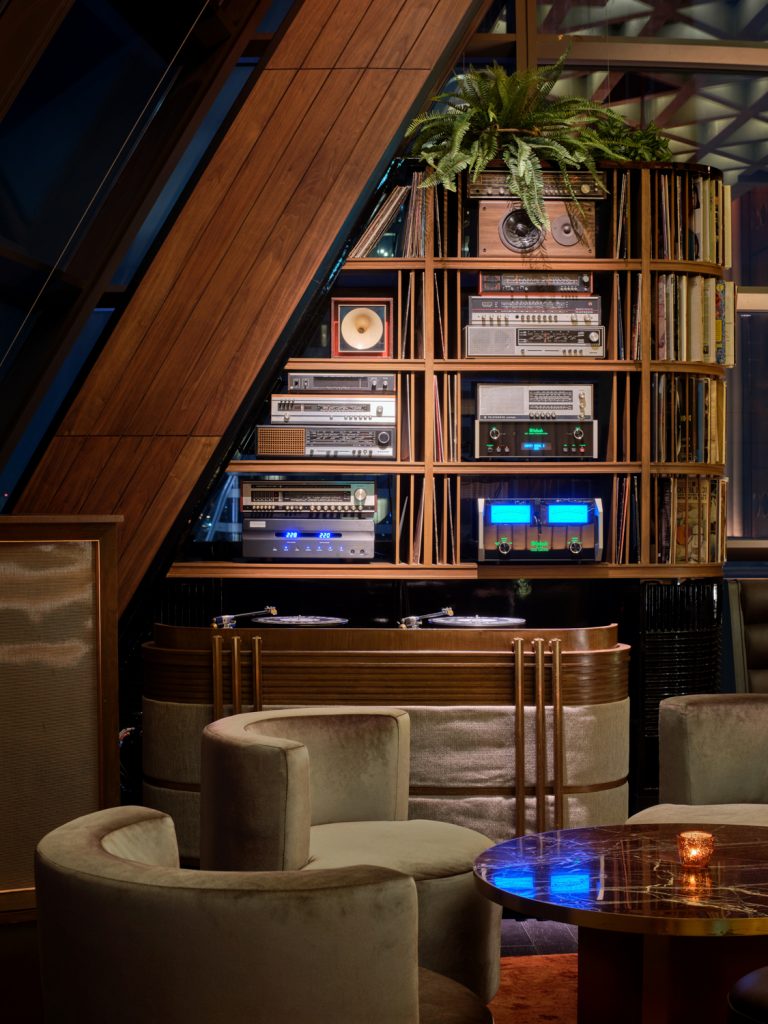WITH OFFICES SPANNING ACROSS CONTINENTS INCLUDING SAN FRANCISCO, NEW YORK, LONDON, AND BANGKOK, THIS HOLISTIC DESIGN STUDIO BELIEVES IN AN APPROACH THEY CALL ‘HOSPITABLE THINKING’
TEXT: PAPHOP KERDSUP
PORTRAIT AND PHOTO COURTESY OF AVROKO
(For Thai, press here)
Rosewood Bangkok – Lennon’sGreg Bradshaw and Adam Farmerie of Avro Design met William Harris and Kristina O’Neal of KO Media and became friends since they were students at the Carnegie Mellon University in Pittsburgh. Like what most young art and design students did, the four of them would usually go to each other’s studios and critiqued each other’s works. “It kinda set the foundation of what would be our really long-lasting life partnership.”
After graduation and spending a couple of years on their own practices — Harris and O’Neal on branding and strategy while Bradshaw and Farmerie on architecture — the four reunited again in their late 20s in New York City for one project. With the client’s requirement was for them to get involved in the whole makeover, from graphic design to the spatial and digital experience, they felt like it was the right time to call it a dream job since they were able to completely surround the project and harness their different skills and interests. That collaboration, therefore, led to the establishment of AvroKO in 2001 with its mission to be a multifaceted company providing services ranging from branding and strategy, furniture, interior, and lighting design, to even fashion and business operations.
Rosewood Bangkok – Nan Bei“I would say that we are an integrated, holistic designer rather than a multi-disciplinary designer. That’s the way we think of our practice,” began Harris during our casual conversation at The Champagne Bar hidden on the 57th floor of Waldorf Astoria Bangkok, one of the projects AvroKO designed for this five-star hotel on Rajdamri Road. With four offices spanning across the globe from San Francisco, New York City to London and Bangkok, AvroKO is best known for their specialization in hospitality design. Yet, the term ‘hospitality’ in this sense does not limit merely to hospitality projects be it a bar, a restaurant, or a hotel. So, the four have created an approach called ‘hospitable thinking’ and employed it in other different typologies including retails and office spaces as well.
For AvroKO, hospitable thinking is not only a way of working but a philosophy on how they approach life as well as how they craft things. Noticing that we were in doubt about the term, Harris further explained that hospitable thinking is “a series of steps that we take to create a multilayered experience — an emotionally connected experience, so to speak — that really engages people and makes them feel psychologically safe. It might be something you don’t even recognize consciously. So, it’s about how we incorporate the inherent fundamental needs of humans and translate that into space through the experience journey: where customers sit, how the staff interacts with them, what the whole experience is, and so on.”
Rosewood Bangkok – Lennon’sApart from The Champagne Bar that we mentioned earlier, some other projects designed by the studio in Thailand also include The Loft Bar and the Bull & Bear Restaurant at Waldorf Astoria Bangkok, the Nan Bei Chinese Restaurant and the Lennon’s Bar at Rosewood Bangkok, and The Standard Hotel in Phuket, to name a few. Although AvroKO has extensive experience working on projects across continents in more than 30 cities, it comes as no surprise that getting things built is still a big challenge when it comes to working in Thailand. Harris told us that, apart from finding the right artisans and builders for each project, managing tight schedules while dealing with certain developers here is also a unique experience. “But we love challenges. That’s what makes all of them more satisfying when you can come to the other side with better success. A lot of things just happen on their own sometimes so we have to be very hands-on. So, as a designer, being present and helping to manage the building of space is important.”
Since AvroKO’s repertoire almost always implies the word ‘luxury,’ a noun as well as an adjective that the media often uses to describe their projects, we asked Harris what his view towards this modifier was. The definition he gave was quite interesting. “I typically have a love-hate relationship with that word as well as that whole stratum of design,” confessed Harris, “Many of our projects aren’t luxurious. They are much more democratic and analogue, sometimes down to dirty. The tradition of luxury is shifting; becoming more real, authentic, and odd to some extent. It doesn’t have to always be totally refined or posh anymore. For us, luxury is definitely becoming more experiential. It’s about creating a truly one-of-a-kind experience that can’t be replicated anywhere else. I know it’s hard to achieve but the goal of luxury is to attain that.”
Rosewood Bangkok – Nan BeiA lot of narratives and artistry that the studio ushers in their spaces helps to create these experiences that are unique in that sense. So, in this very case, the term ‘luxurious experience’ is a nicer way to put it. “You can actually have the most luxurious experience even when you’re relaxing in a tent or sipping tea on an edge of a sand dune in the Sahara. And even though you’re covered in sand, it can still be the most amazing, luxurious experience, you ever have.”
But with great experience comes a great Instagrammable moment. At the very moment in the age of ‘extreme self,’ when a hospitality project also needs to function as a photogenic and shareable backdrop for self-presentation online, we asked AvroKO on the emergence of this trend towards the end of our conversation. “In my view, good designers have been creating spaces that have beautiful moments to engage with which are, quote, unquote, ‘Instagrammable before Instagram was ever invented.’ Designers never create an Instagrammable moment. They just create a great moment and it happens to show up on Instagram. Who doesn’t love beautiful experiences and memorable moments that people can take photos of? …But you’ll never see us creating a spot where someone can stand with wings behind them to complete a picture anyway,” laughed Harris.

